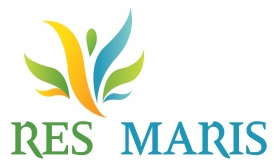RES MARIS – “Regenerating threatened habitats in the marine area of Capo Carbonara, Sardinia”
LIFE13 NAT/IT/000433

Object
Restoration and renaturation of the environment and the native dune vegetation after the elimination of the exotic-invasive species.
Objective
Restoration and conservation of the priority habitat 2270* through naturalistic engineering interventions and new plantations to promote the spontaneous processes of formation, growth and consolidation of the dunes while also trying to preserve them from the flow of tourists into the dune systems.
Good Practice Description
To favour the spontaneous processes of formation, growth and consolidation of the dunes, naturalistic engineering interventions were carried out at the same time as the planting of native species.
Specifically, within the dune systems, structural works were carried out in order to create: trigger nuclei capable of blocking the sand and stabilizing the wind flows that transport the sediments and grids to allow greater stabilization of the habitats. Within these structures the species characterizing these habitats were then sown or planted, in particular: Pancrazium marittimum, Pistacia lentiscus, and Juniperus macrocarpa.
Walkways have also been built to channel the affluence of tourists and simple fences (rope-pole system) to avoid trampling on the whole dune. All these interventions were carried out with totally compatible and biodegradable natural materials (wood, reeds, vegetable fibers, nets and ropes) in order to guarantee, with their natural deterioration and integration into the landscape, the reconstitution of the dune profile and minimize the impact ecological as well as the visual one of the users of the beaches.
Territorial Context
The interventions were carried out in the South of Sardinia in the municipal area of Villasimius. Habitat 2270*, in the SAC "Isola dei Cavoli, Serpentara, Punta Molentis and Campulongu", is located in the innermost part of the stable dunes and occupies about 9 hectares. This is an area with a strong tourist vocation.
Replicability conditions
The interventions carried out in this good practice can be replicated in all the dune ecosystems of the Mediterranean areas. The species used are species that are widespread throughout the Mediterranean and adapt very easily to these ecosystems, creating autonomous populations capable of reproducing and multiplying over time.
Naturalistic engineering interventions are in fact already used in other contexts, in other Life projects not only in Italy but also in Spain and Greece.
Dissemination material
From the LIFE GoProFor database, in the final part of the sheet, it is possible to download some material relating to the project, including the "Manual of good practices and guidelines for the correct use and management of natural habitats in the beach system", the report concrete conservation actions (Actions C4 and C5), as well as the Layman's report and the final technical report where all the actions are described.


